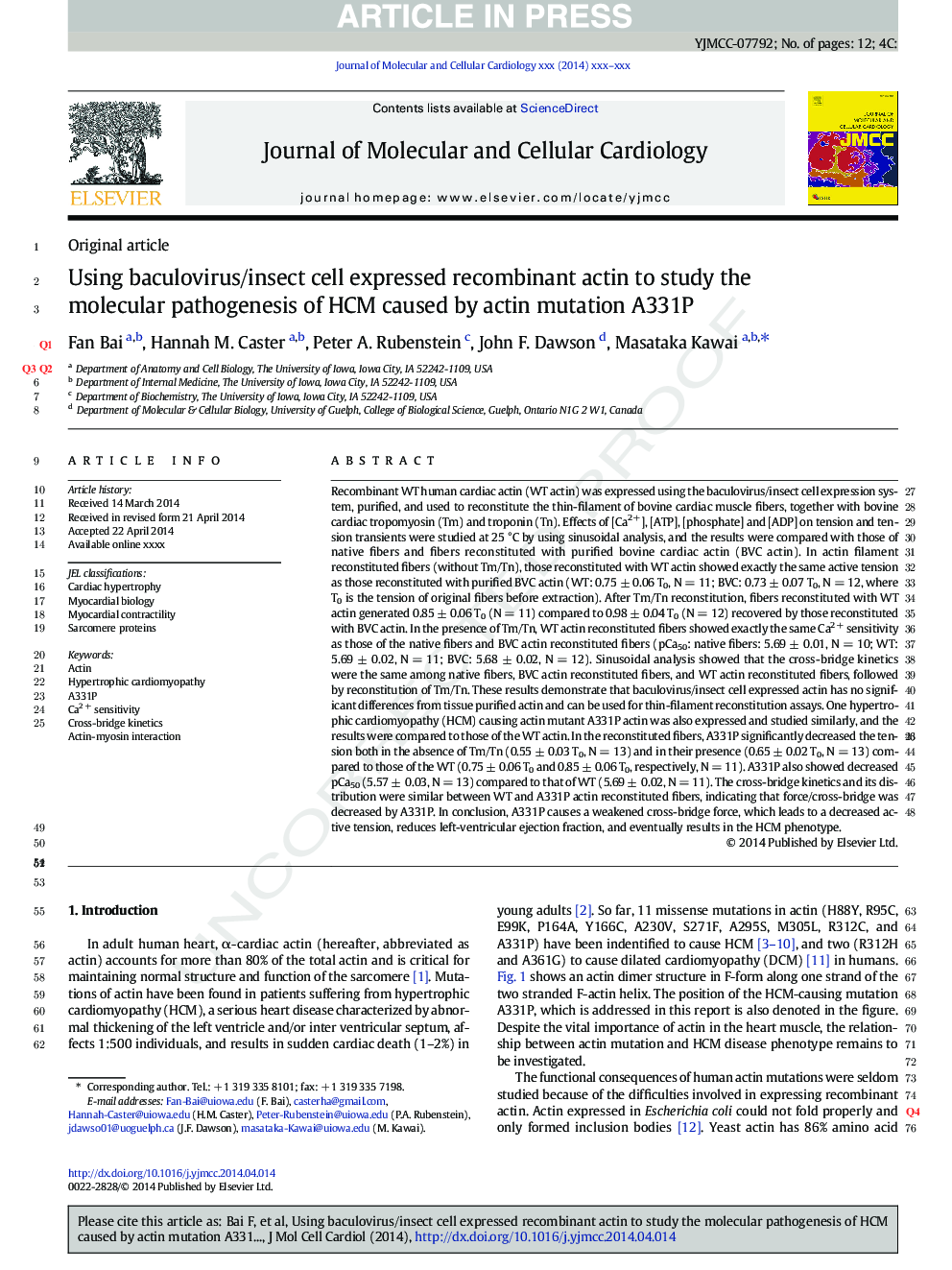| Article ID | Journal | Published Year | Pages | File Type |
|---|---|---|---|---|
| 8474721 | Journal of Molecular and Cellular Cardiology | 2014 | 12 Pages |
Abstract
Recombinant WT human cardiac actin (WT actin) was expressed using the baculovirus/insect cell expression system, purified, and used to reconstitute the thin-filament of bovine cardiac muscle fibers, together with bovine cardiac tropomyosin (Tm) and troponin (Tn). Effects of [Ca2 +], [ATP], [phosphate] and [ADP] on tension and tension transients were studied at 25 °C by using sinusoidal analysis, and the results were compared with those of native fibers and fibers reconstituted with purified bovine cardiac actin (BVC actin). In actin filament reconstituted fibers (without Tm/Tn), those reconstituted with WT actin showed exactly the same active tension as those reconstituted with purified BVC actin (WT: 0.75 ± 0.06 T0, N = 11; BVC: 0.73 ± 0.07 T0, N = 12, where T0 is the tension of original fibers before extraction). After Tm/Tn reconstitution, fibers reconstituted with WT actin generated 0.85 ± 0.06 T0 (N = 11) compared to 0.98 ± 0.04 T0 (N = 12) recovered by those reconstituted with BVC actin. In the presence of Tm/Tn, WT actin reconstituted fibers showed exactly the same Ca2 + sensitivity as those of the native fibers and BVC actin reconstituted fibers (pCa50: native fibers: 5.69 ± 0.01, N = 10; WT: 5.69 ± 0.02, N = 11; BVC: 5.68 ± 0.02, N = 12). Sinusoidal analysis showed that the cross-bridge kinetics were the same among native fibers, BVC actin reconstituted fibers and WT actin reconstituted fibers, followed by reconstitution of Tm/Tn. These results demonstrate that baculovirus/insect cell expressed actin has no significant differences from tissue purified actin and can be used for thin-filament reconstitution assays. One hypertrophic cardiomyopathy (HCM) causing actin mutant A331P actin was also expressed and studied similarly, and the results were compared to those of the WT actin. In the reconstituted fibers, A331P significantly decreased the tension both in the absence of Tm/Tn (0.55 ± 0.03 T0, N = 13) and in their presence (0.65 ± 0.02 T0, N = 13) compared to those of the WT (0.75 ± 0.06 T0 and 0.85 ± 0.06 T0, respectively, N = 11). A331P also showed decreased pCa50 (5.57 ± 0.03, N = 13) compared to that of WT (5.69 ± 0.02, N = 11). The cross-bridge kinetics and its distribution were similar between WT and A331P actin reconstituted fibers, indicating that force/cross-bridge was decreased by A331P. In conclusion, A331P causes a weakened cross-bridge force, which leads to a decreased active tension, reduces left-ventricular ejection fraction, and eventually results in the HCM phenotype.
Keywords
Related Topics
Life Sciences
Biochemistry, Genetics and Molecular Biology
Cell Biology
Authors
Fan Bai, Hannah M. Caster, Peter A. Rubenstein, John F. Dawson, Masataka Kawai,
